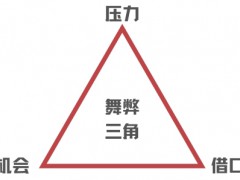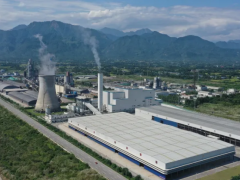据钻机地带7月12日专栏消息,今年夏天,美国的原油供应只会略微增加。
根据雷斯塔能源的最新分析,美国7月份的原油产量预计将增长6万桶/天,达到1151万桶/天,与8月份持平。
据雷斯塔能源透露,预计9月和10月原油产量将分别下降至1134万桶/天和1141万桶/天,然后从2021年11月开始出现稳定的缓慢增长轨迹,届时原油产量预计将回升至1155万桶/天。该机构预计,12月的产量将达到1162万桶/天,从2022年1月开始,产量将继续上升,打破同年10月以来的月平均水平1200万桶/天。
雷斯塔能源指出,由于预计西得克萨斯中质原油(WTI)价格不会保持在当前的高位,美国2022-2023年的月产量预计不会达到2019年创下的1290万桶/天的纪录。不过,该公司补充称,如果波动持续,将有一些上行潜力。
该公司预测,从2021年下半年到2023年,德克萨斯州和新墨西哥州的石油产量将几乎全面增长,而美国其他地区的石油产量将保持在530万桶/天至540万桶/天。
雷斯塔能源在其最新分析中强调,美国公共生产商在2021年的原油产量中,很多都以远低于70美元的价格进行了对冲,这意味着运营商计入了财务损失,部分抵消了实际收益,最终抑制了额外生产。然而,该公司还指出,2021年页岩油总产量中有不到40%的产量是对冲的,这意味着许多运营商将受到WTI价格上涨的高度激励,尤其是私营生产商。该公司指出,对他们来说,如果油价上涨被视为一种结构性变化,而非短期再平衡,那么从理论上讲,产量可能会有一些上行空间。
然而,雷斯塔能源指出,在2022年第二季度之前,这两种类型的生产商都不可能有重大的供应响应。该预测机构表示,石油行业仍严重依赖已钻探但未完工(DUC)完井,为了大幅增加压裂量,运营商首先需要增加钻井量。雷斯塔能源还强调,在经历了上一年的艰难之后,2021年的运营商将继续致力于资本约束和向股东返还股息。
裘寅 编译自 钻机地带
原文如下:
How Will USA Oil Production Evolve to 2023?
U.S. crude oil supply will only marginally increase this summer.
That’s according to Rystad Energy’s latest analysis, which forecasts that U.S. crude output is forecast to grow by 60,000 barrels per day to 11.51 million barrels per day (MMbpd) in July and remain at the same level in August.
A dip is then expected in September and October to 11.34 MMbpd and 11.41 MMbpd, respectively, followed by a constant, slow growth trajectory commencing in November 2021, when crude output is expected to rise back to 11.55 MMbpd, Rystad Energy revealed.
December will see 11.62 MMbpd, and, from January 2022 onwards, output will continue to rise, breaking the 12 MMbpd monthly average from October that year, Rystad Energy projected.
U.S. monthly output in 2022-2023 is not expected to match the record 12.9 MMbpd achieved in 2019, as WTI prices are not forecast to remain at the current high levels, Rystad Energy noted. The company added, however, that there is some upside potential if volatility continues.
Texas and New Mexico are expected to drive nearly all oil production growth from the second half of 2021 through 2023, while the rest of the country is set to remain in a maintenance mode, producing around 5.3 MMbpd to 5.4 MMbpd over the coming years, Rystad Energy predicted.
In its latest analysis, Rystad Energy highlighted that a lot of 2021 crude output by public producers in the U.S. is hedged at much lower price levels than in the $70s, meaning operators book a financial loss which partly offsets physical gains, ultimately disincentivizing extra production. The company also outlined, however, that below 40 percent of the total expected shale oil output in 2021 is hedged, meaning there are many operators that would be highly incentivized by higher WTI prices, especially private producers. Rystad Energy noted that, for them, there could in theory be some upside to production if the higher prices are perceived as a structural change rather than short-term rebalancing.
Nevertheless, no major supply response is possible for both types of producers before the second quarter of 2022, Rystad Energy pointed out. The industry is still heavily relying on DUCs completion and to see a serious ramp up in fracking volumes operators would first need to increase drilling, Rystad Energy said. The company also highlighted that operators in 2021 are remaining committed to capital discipline and on returning dividends to shareholders after the previous tough year.
免责声明:本网转载自其它媒体的文章,目的在于弘扬石化精神,传递更多石化信息,并不代表本网赞同其观点和对其真实性负责,在此我们谨向原作者和原媒体致以敬意。如果您认为本站文章侵犯了您的版权,请与我们联系,我们将第一时间删除。







